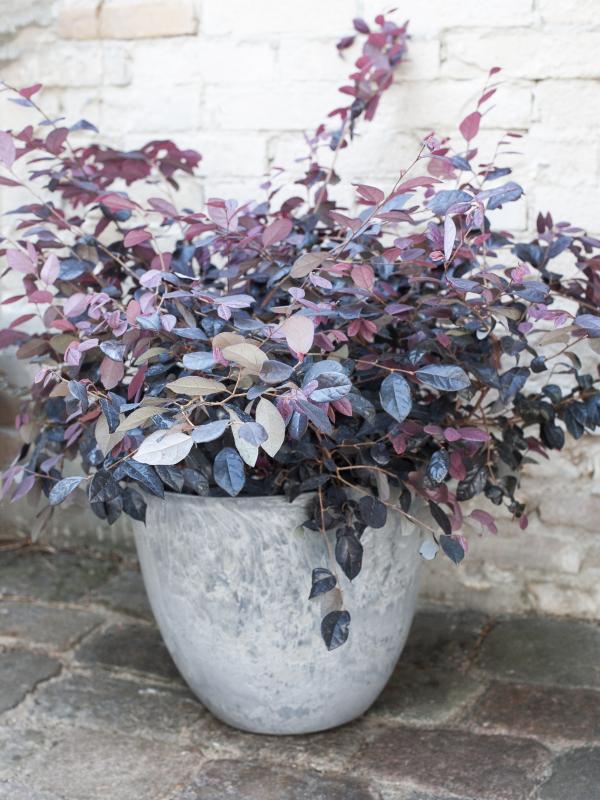When it comes to exciting autumn colour, it’s hard to beat the Chinese fringe flower (scientific name: Loropetalum chinense 'Black Pearl'). It’s a bush with a broad crown on which the new foliage emerges in late summer and autumn. After the winter this ornamental shrub blooms with hanging burgundy flowers with fringes (there are also varieties with white and bright pink flowers). The heart-shaped leaves of the Chinese fringe flower are purple with touch of green, and are attractively coloured throughout the year. The plant grows to a height of between 70 and 100 cm.

Cheerful fringes
The Chinese fringe flower is a member of the witchhazel family and grows in China, Japan and South-East Asia, where the shrub is usually somewhat larger than it is here. Although the plant was bred in Japan, it is more common in China and north-east India. This ornamental shrub arrived in Europe in around 1880 thanks to Charles Maries, who collected plants in Japan for the leading Victorian plant nursery Veitch. The nursery described it fittingly as ‘a plant to treasure because it blooms when winter is intolerable before the explosion of spring’.
Chinese fringe flower trivia
- This ornamental shrub likes to be in company with Camellia, an early bloomer that remains green throughout the year.
- The base of the Chinese fringe flower can sometimes look a bit bare. You can solve this by planting some small plants beneath it or by planting it deep. In the latter case it creates a natural bonsai look that suits this plant well.
- It is traditional in the Far East to plant’s snowdrop bulbs around the foot of the Chinese fringe flower. The combination of the white of the snowdrops with the deep colour of the foliage creates a visual balance which is very important, particularly in Japan.




